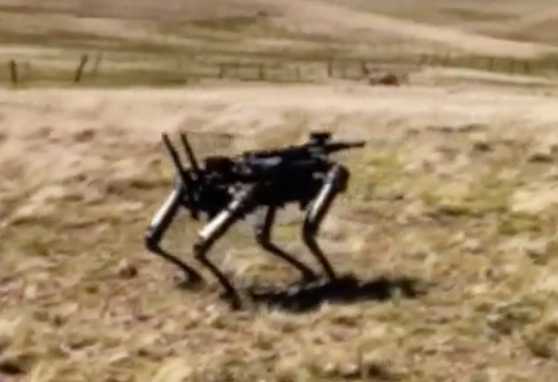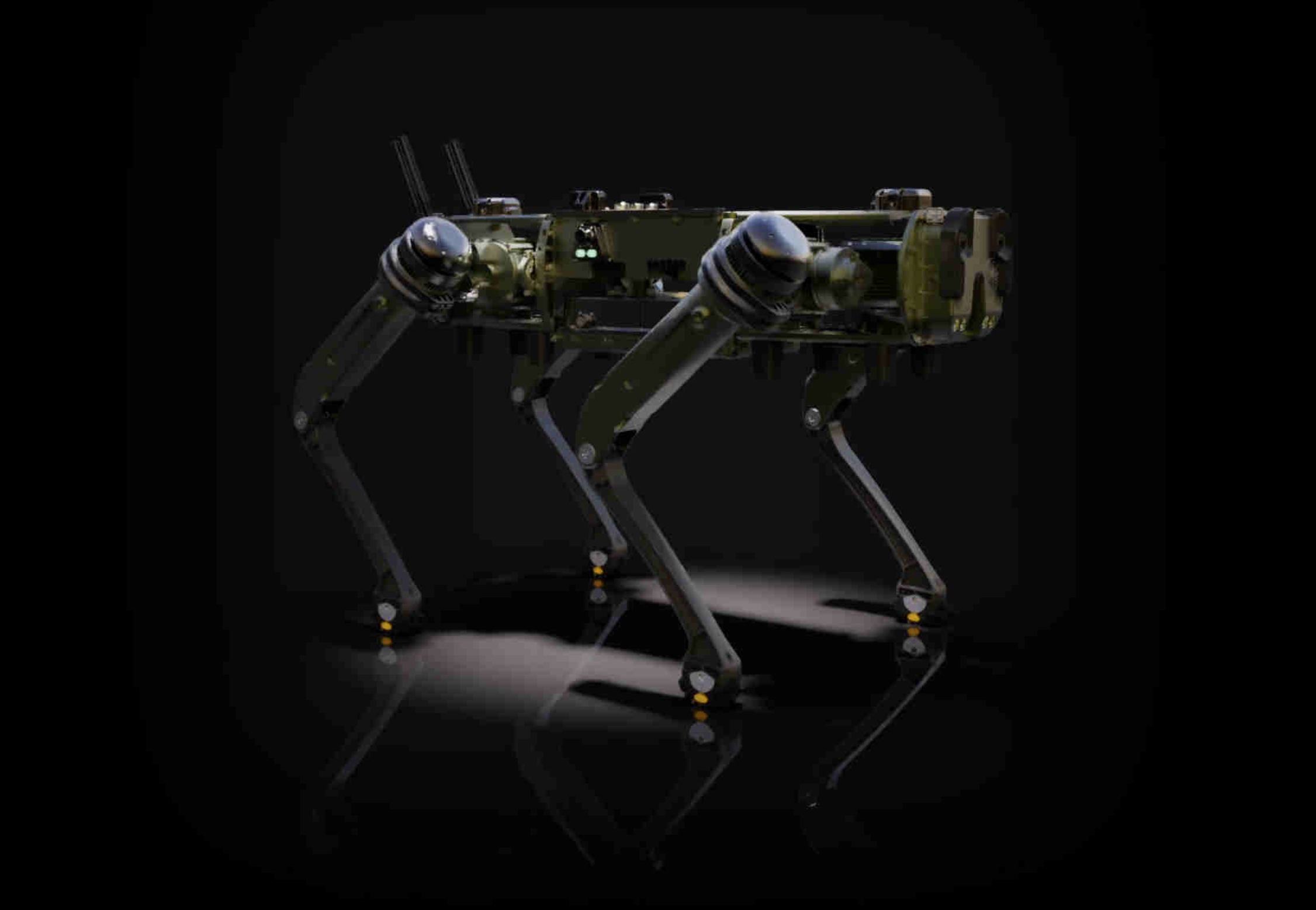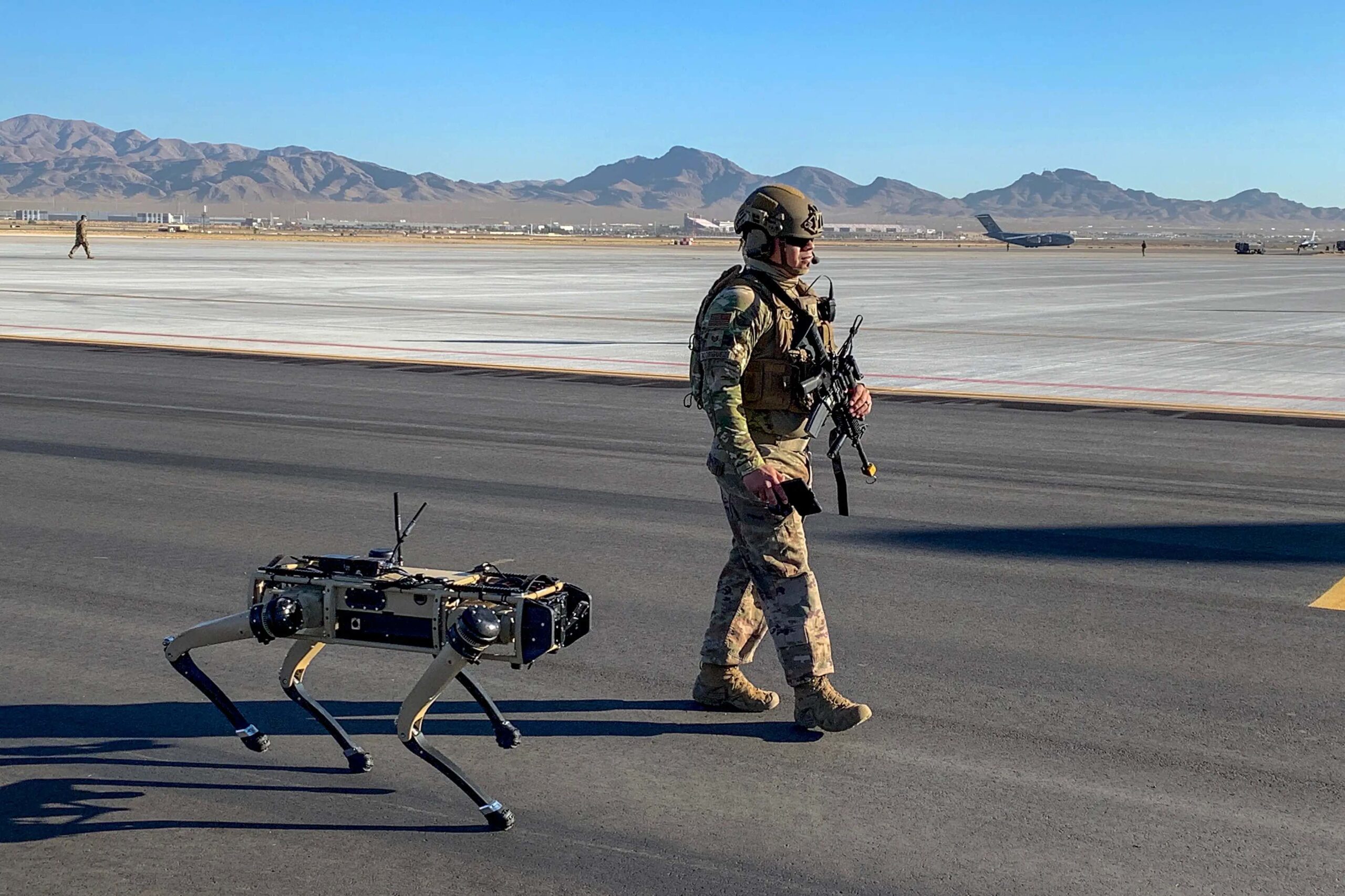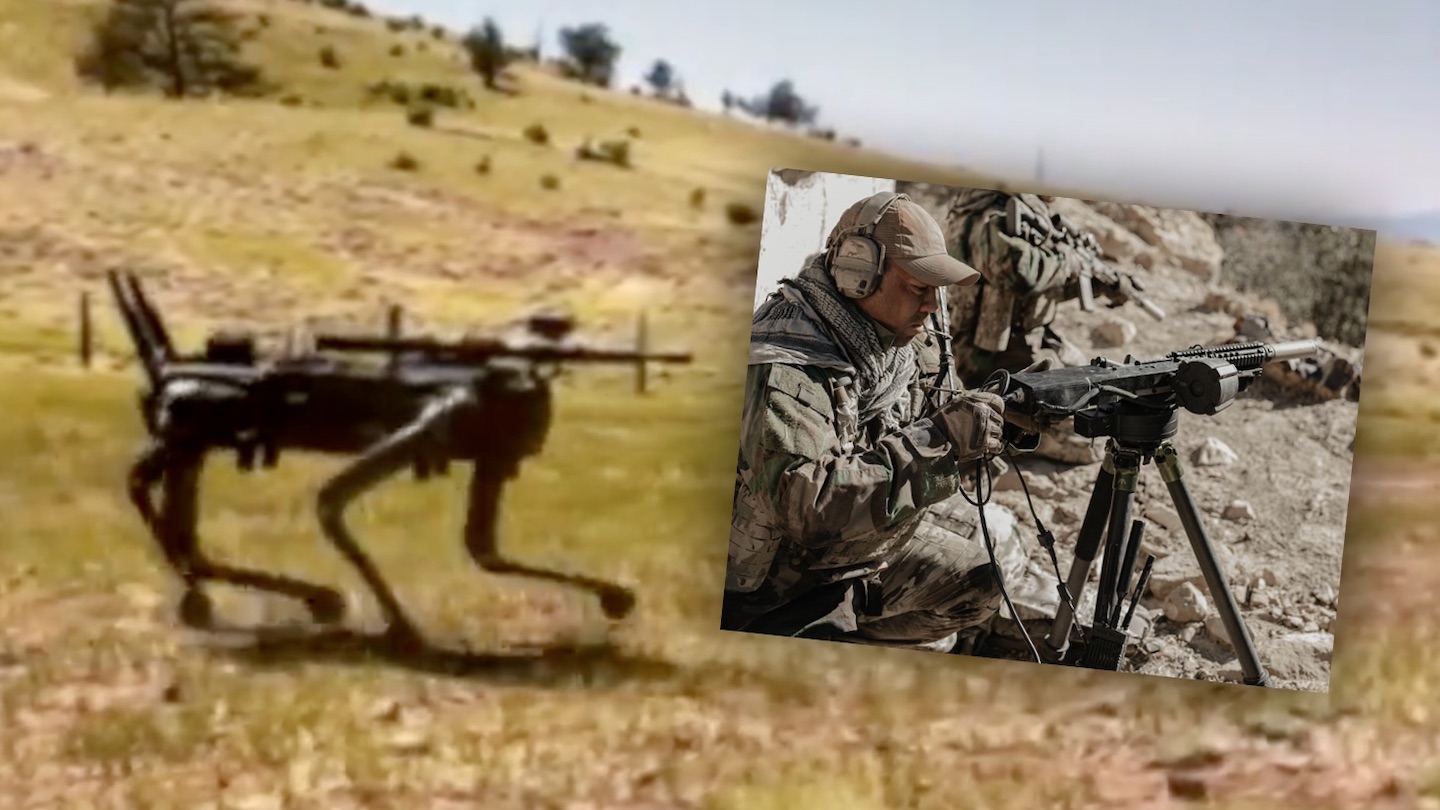The United States Marine Forces Special Operations Command (MARSOC) looks to be the first organization within the U.S. military to be using rifle-wielding “robot dogs.” Other armed robotic K-9s have been explored by the U.S. military and shown off by foreign countries, in the recent past.
Eric Shell, head of business development at Onyx Industries which supplied the gun system for the dogs, confirmed to TWZ on the floor of SOF Week that they are in use with MARSOC. Shell noted that MARSOC has two robot dogs fitted with gun systems based on Onyx’s SENTRY remote weapon system (RWS) — one in 7.62x39mm caliber, and another in 6.5mm Creedmoor caliber. It’s unclear precisely how many other robotic dogs MARSOC may have at present, however, it appears likely that the two equipped with SENTRY are being tested by the command.
Video footage released by Onyx Industries showing one of MARSOC’s robot dogs can be seen here.

According to Shell, MARSOC’s four-legged friends are “doing tunnel work, as well as perimeter security,” but he could not specify where precisely.
The underlying robot dog doing this tunnel work for MARSOC is Ghost Robotics’ Vision 60 quadrupedal unmanned ground vehicle, or Q-UGV, Shell said.
Ghost Robotics describes its Q-UGV as a “mid-sized high-endurance, agile and durable all-weather ground drone for use in a broad range of unstructured urban and natural environments for defense, homeland and enterprise applications.” Vision 60 is designed for tasks such as remote inspection, Intelligence, Surveillance, Reconnaissance (ISR) missions, mapping, distributed communications, and persistent security. The company has worked with various entities to explore different defense and security applications for Q-UGV in the past, which you can read more about in this past War Zone feature.

In 2021, for example, we saw Ghost Robotics team up with SWORD International to create what the companies call the Special Purpose Unmanned Rifle, or SPUR. That system saw SWORD’s 6.5mm Creedmoor gun fixed atop Ghost Robotics’ Q-UGV. Since then, other types of robot dogs have also emerged armed with guns, as well as examples sporting rocket launchers, one of which has been tested by the Marines.
The Q-UGVs currently being tested by MARSOC, on the other hand, are configured with Onyx’s SENTRY RWS. The integrated system combines Onyx’s X360 Pan/Tilt Gimbal stack (providing full electro-optical/infrared capability), an AI-enabled Digital Imaging System (DIS), and what the company terms RAW (Remote Actuated Weapon). According to Onyx, the Remote Actuated Weapon in its various calibers accepts standard-size magazines and drums.

As Shell explained, the autonomous weapon system will “scan and detect targets… [locking] on [to] drones, people, [and] vehicles.” As it features man-in-the-loop fire control, it will alert the operator once a target has been identified, letting the human decide whether to engage or not.
SENTRY can be operated over “any comms network… you can really operate this from anywhere in the world, keeping the operator kind of out of danger,” Shell said.
A non-kinetic, sensor-only configuration featuring the Gimbal stack is also available, he pointed out.
For MARSOC, there’s a lot that translates from their use of real-life dogs as part of highly dangerous operations to those of the robotic kind; particularly of the autonomous sort offered by Ghost Robotics and Onyx Industries. Both, for example, are able to fit into tight spaces where humans cannot, expanding the intelligence and information-gathering possibilities in the field.

Their use also removes the risk posed by certain types of work for human operators, particularly with regard to scouring tightly confined tunnels and trenches where close-quarters combat is extremely dangerous. Blazing a trail through mined or booby-trapped areas will also be highly valuable applications for these mechanized K-9s. That MARSOC robot dogs coupled with Onyx’s SENTRY RWS means they can autonomously select potential targets in those environments, prior to a human-in-the-loop safely engaging them from afar.
Moreover, their usefulness in providing persistent perimeter security has already been explored by other branches of the U.S. military. Unarmed Q-UGVs have notably been used by the U.S. Air Force for scouting purposes at bases like Tyndall and Nellis Air Force Bases. Moreover, Shell indicated on the floor of SOF Week that an unspecified number of Q-UGVs teamed with the SENTRY system are being experimented with at Dyess Air Force Base for perimeter security.

In line with the broader trend towards small, uncrewed platforms on the ground and in the air, armed robotic dogs have also emerged in other countries, too, including China and Russia.
While further details on MARSOC’s use of the gun-armed robot dogs remain limited, the fielding of this type of capability is likely inevitable at this point. As AI-enabled drone autonomy becomes increasingly weaponized, just how long a human will stay in the loop, even for kinetic acts, is increasingly debatable, regardless of assurances from some in the military and industry.
Just last week, at the Modern Day Marine symposium, the head of the USMC’s advanced robotics initiative laid out the vision for what the future of robotics-heavy warfighting will look like — including the use of robot dogs. It’s becoming very clear that what was once fodder for science fiction tales is now quickly becoming a battlefield reality, and highly agile robot dogs, capable of going into extremely risky or inaccessible areas, and even dealing out deadly force in the process, are now on the horizon.
UPDATE: 5/8/2024
MARSOC has provided the following statement to TWZ regarding its robot dogs:
“The Q-UGV, referred to as a ‘robot dog,’ is under evaluation by MARSOC as one of many pieces of technology in ground robotics evaluation. MARSOC is not fielding this capability at this time. Weapons are just one of many potential payloads for this piece of technology and others may include ISR or EW payloads. MARSOC is aware of and follows all DoD policy on autonomous weapons and comments by Onyx Industries may be more indicative of their current or future offerings. Those comments should not be construed as a capability or a singular interest in one of many use cases during an evaluation.”
Contact the authors: oliver@thewarzone.com, howard@thewarzone.com
